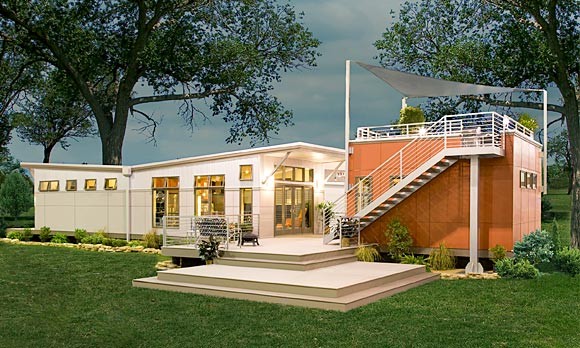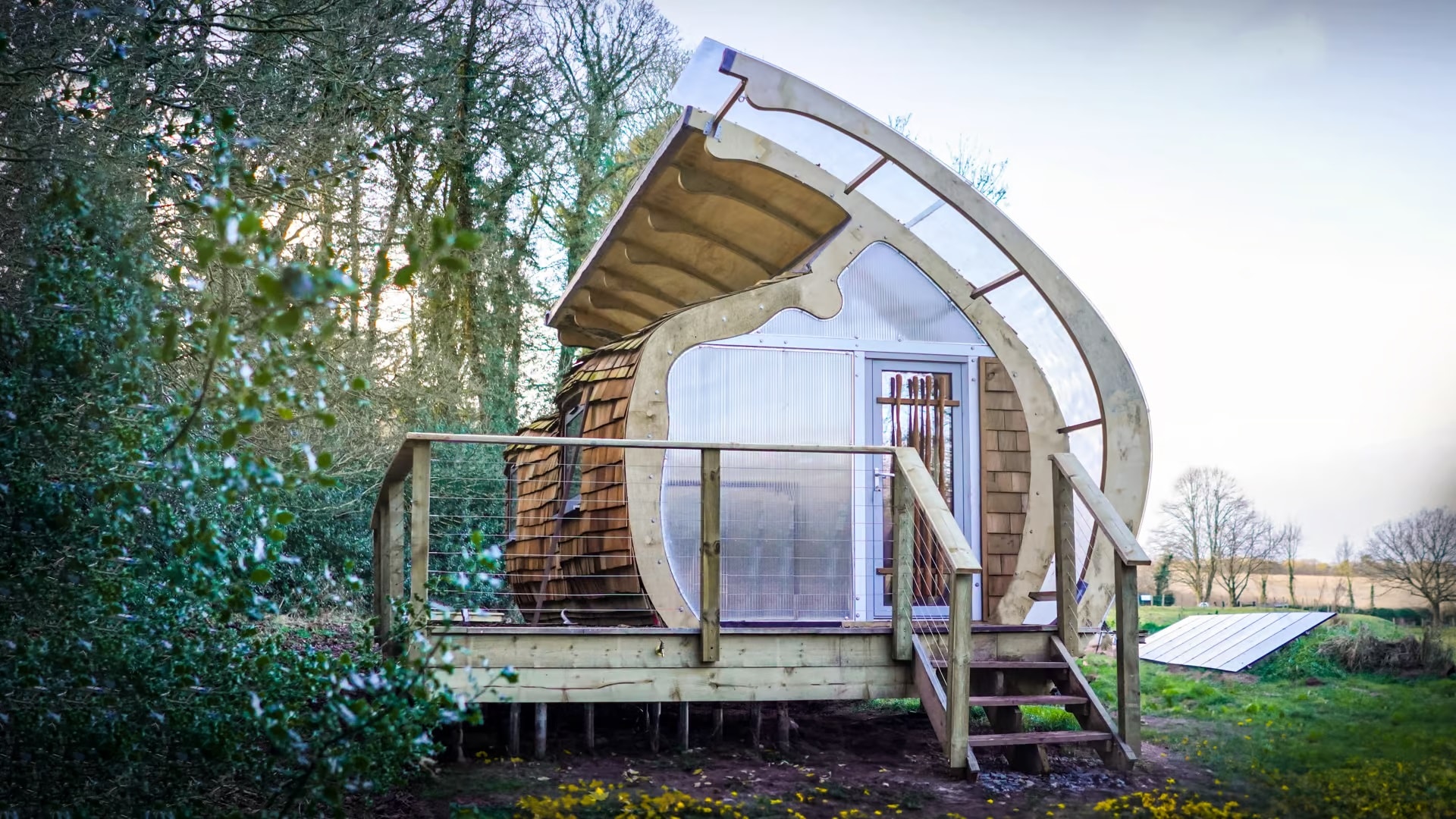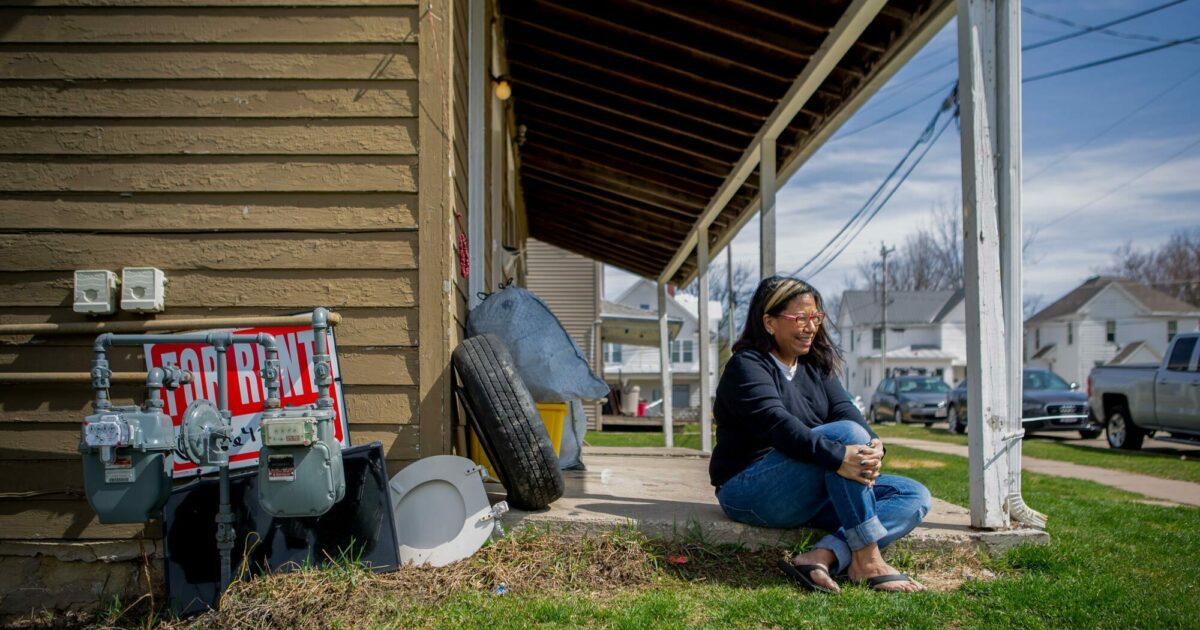By Gary Fleisher
Recently I was asked why manufactured housing still contributes to environmental problems in the US. I asked her where she heard this and she just said someone told her. So I explained to her that not only is manufactured housing, but offsite built housing is more environmentally better than those homes built on site.

top and above photos – Clayton Homes
I also explained that in the face of escalating environmental concerns, the entire construction industry is undergoing a significant transformation. Sustainability has emerged from the shadows to become a beacon of innovation and progress, guiding the sector towards a greener future. This evolution is not just a trend but a necessary shift in how buildings are conceptualized, designed, and constructed. Manufactured housing, a segment once criticized for its environmental impact, is now at the forefront of this sustainable revolution, incorporating eco-friendly technologies and practices that promise a brighter, more sustainable future.

an AI-generated manufactured home of the future
Manufactured homes, known for their affordability and efficiency, are shedding their old skin. Gone are the days of one-size-fits-all, environmentally indifferent constructions. Today, these homes are being designed with the planet in mind, utilizing materials and methods that speak to a deep commitment to ecological stewardship and sustainability. This new era of manufactured housing is characterized by an innovative spirit, marrying cost-effectiveness with environmental responsibility.
A significant driver for all offsite manufacturers of this change is the industry-wide adoption of green building technologies. These are not mere add-ons but integral features that enhance the energy efficiency and sustainability of manufactured homes. Among these, solar panels stand out as a shining example of renewable energy utilization. By harnessing the power of the sun, these homes can significantly reduce reliance on traditional power grids, cutting electricity costs and carbon footprints in one fell swoop.
Rainwater harvesting systems are another testament to the industry’s ingenuity. These systems capture rainwater, repurposing it for landscaping, flushing toilets, and other non-potable uses. This not only conserves precious water resources but also reduces the overall water demand of all homes, making them more self-sufficient and environmentally friendly.
Perhaps one of the most visually striking innovations is the advent of green roofs by some offsite home companies. These living roofs do more than just beautify; they act as natural insulators, keeping homes cooler in summer and warmer in winter. Moreover, they contribute to reducing urban heat islands and supporting local wildlife and biodiversity, making offsite homes a part of the solution to urban environmental challenges.
The future integration of these sustainable features into manufactured housing reflects a profound change in the industry’s priorities. It’s a shift from short-term cost-saving to long-term sustainability goals, recognizing that the health of our planet is intrinsically linked to the way we live and build. By reducing carbon emissions, conserving water, and promoting renewable energy, the manufactured housing sector is setting a new standard for what it means to be eco-friendly.
This commitment to sustainability is not just about adhering to regulations or meeting industry standards; it’s about leading by example. Manufactured housing companies are proving that it is possible to provide affordable, high-quality homes without sacrificing the environment. This approach not only benefits the planet but also enhances the livability and appeal of these homes, making them a smart choice for environmentally conscious consumers.
As we move forward, the role of manufactured housing in promoting sustainable living is only set to grow. With each advancement, these homes are helping to pave the way for a more sustainable, environmentally friendly future. It’s a testament to the industry’s resilience and its ability to adapt and innovate in the face of global challenges.
In the end, the sustainable transformation of manufactured housing is more than just a series of technological advancements; it’s a reflection of a broader societal shift toward sustainability. It signifies a growing awareness and appreciation for the delicate balance between our built environment and the natural world. As this trend continues, manufactured homes will not only serve as a model of affordable, sustainable living but also as a beacon of hope for a greener, more sustainable future.
Through the lens of sustainability, the manufactured housing industry is redefining itself, proving that with innovation and commitment, building a sustainable future is not just possible but inevitable. This is a journey we are all a part of, and together, we can look forward to a future where our homes are in harmony with the earth.
.
Gary Fleisher is a renowned blogger and commentator on construction and housing trends, known for his insightful analysis of the industry.



